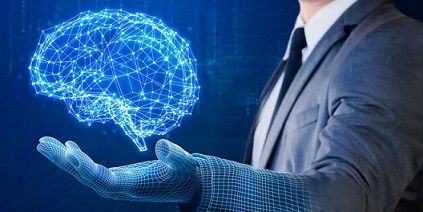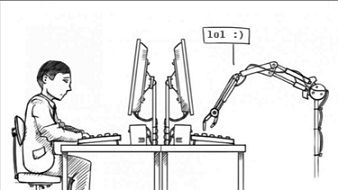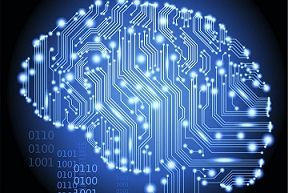
Who was Alan Turing?
Turing test
Objections from the Turing Test
- The Theological Objection: Most of the objections were based on theological issues, the argument was that to think was only a function of the immortal soul of man, which God has given man and woman but not any animal or machine and that is why animal or machine cannot think. Many positions considered that man was a unique being and that there can be no machine that can be compared with humans.
- The "Heads in the Sand" Objection: "The consequences of machines thinking would be too dreadful. Let us hope and believe that they cannot do so”.
This argument is one of the most affecting when thinking that machines can really think because we like to believe that man is a superior to the rest of creation and think it is better to show that the human being is really superior so we do not have to fear that we may lose our command position.
- The Mathematical Objection: There are several results in mathematical logic that can be used to show that there are limitations to the powers of a discrete-state machine. The best known of these results is Gödel's theorem and shows that in any sufficiently powerful logical system statements can be formulated which can neither be proved nor disproved within the system, unless possibly the system itself is inconsistent. However, Turing states that mistakes and confusions are not free from the human mind, and this diminishes intellectual capacity.
- The Argument from Consciousness: "Not until a machine can write a sonnet or compose a concert because of thoughts and emotions felt, and not by the chance fall of symbols, could we agree that machine equals brain-that is, not only write it but know that it had written it. No mechanism could feel (and not merely artificially signal, and easy contrivance) pleasure at its successes, grief when its valves fuse, be warmed by flattery, be made miserable by its mistakes, be charmed by sex, be angry or depressed when it cannot get what it wants."
This argument is very well expressed in Professor Jefferson’s Lister Oration for 1949. If we take this argument we will note that this is a denial of the validity of the proof. But the only way to know and be sure if the machine thinks is to be the machine and feel its own thought. Turing affirms that if among humans it is correct to ignore solipsism, it should also be done with machines, and since the only way to solve the problem of lack of consciousness is solipsism, it would be better to leave it aside and not consider it in the same way.
- Lady Lovelace’s Objection: "The Analytical Engine has no pretensions to originate anything. It can do whatever we know how to order it to perform. "
This argument of Lady Lovelace considers that machines do not have the capacity to originate something new by their own actions and that they do not have the capacity to surprise us. Turing says that the computer, being a machine, can continually surprise. It cannot be considered as a creative mental process, it could be that creativity is realized in the mind of the observer, and not in the generator.
- Argument from Continuity in the Nervous System: Argues that it is not possible to imitate a continuous system like the human mind (problem of the continuity of the nervous system) with a discrete system (machine). Nevertheless, Turing affirms that it is possible to discretize with sufficient resources any continuous system, so that the difference between one and the other cannot be noticed.
- The Argument from Informality of Behavior: The behavior of people cannot be described with a set of useful rules in any situation that may occur. For example, we could have the rule of not passing the street when the light of the traffic light is red, and passing the street if the light is green; but what happens if by some fault the two lights appear together? Turing affirms that there are differences between rules of conduct and rules of action. If humans had a certain group of rules of conduct which we are going to use for certain situations throughout our lives, we would be machines, but there are no such rules, therefore humans cannot be machines. Turing also states that even if you have a few rules of action in a discrete system, the answers may be different and unexpected in the same way.

What does the Turing test really measure?


Bibliographic References:
- Web Site: https://es.wikipedia.org/wiki/Test_de_Turing
- Web Site: https://es.wikipedia.org/wiki/Alan_Turing
- Web Site: http://matap.dmae.upm.es/cienciaficcion/DIVULGACION/3/TestTuring.htm
- Web Site: http://blogs.elpais.com/turing/2012/11/el-test-de-turing-y-la-inteligencia-humana.html
- Web Site: https://www.vix.com/es/btg/curiosidades/6126/que-mide-realmente-el-test-de-turing
- COMPUTING MACHINERY AND INTELLIGENCE. By Alan Turing, 1950.

Thanks to these guys @hogarcosmico @bettino @rchirinos @annyclf @paolasophiat @luisrz28 @jesusrafaelmb @erika89 @rubenanez @natitips